Black Mirror II – Review
by Lorna
|
After being left behind by the mainstream some years ago, the graphic adventure/point ‘n’ click genre endured, buoyed up by healthy, dedicated following and evolved into the self-sustaining creature it is today. While a small number of popular franchise releases or the odd hit still get weighty attention, such as the recently revitalised Monkey Island series, Sam and Max, or even Machinarium, for the most part, these adventures have settled firmly into an overlooked niche.
Small sub-genres of their own have developed, such as horror or mystery titles with their own respected developers, franchises, and thriving communities and over the years, many gems have emerged, lauded by those immersed in the genre and slipping beneath the radar of those who aren’t. Black Mirror II’s predecessor was one such title and now, in the hands of new developer Cranberry, this long awaited sequel aims to up the thrills. Far from being action oriented button mashers, this type of adventure moves at a more sedate pace, relying on the story, painstaking exploration, and puzzles for its kicks. It is the sort of game you settle down to with a cup of tea and a biscuit, rather than a crackling headset, Pringles, and requisite whining teenager across Xbox Live.
Like its kin, Black Mirror II is devoutly story driven, aiming to be as immersive as possible, with a level of illustrated realism that is pleasantly surprising to someone who has been away from the genre as long as I have. Played in the third person against lavish ’2.5d’ backgrounds, the player becomes part of the unfolding narrative, exploring, conversing, solving puzzles, and unravelling the mystery as the various plot strands begin to interweave.
With the story the dominant force, an in-depth review of a game like Black Mirror 2 is difficult, making the risk of spoilers (for both games) almost inevitable, and therefore needs approached with some trepidation. Told over six acts and set 12 years after the brutal murders of the first game, the player takes the role of new protagonist, Darren Michaels – a Bostonian physics student holidaying at his mother’s house in the run down town of Biddeford in Maine.
Seemingly thousands of miles from the, now infamous, English town of Willow Creek, scene of the original murders, Darren’s life is filled with the mudanity of a summer job, indulging his passion for photography in a local shop while simultaneously nurturing a large chip on his shoulder. However, nothing is ever as it seems and with the appearance of the alluring Angelina and a mysterious stranger with an interest in the pair of them, Darren is inexorably drawn into a mystery which reaches across the Atlantic and back into the fog of the past and the tragic history of Willow Creek which is still languishing in the shadow of the Gordon family curse.
Murder, mystery, blackmail, suicide, mysterious strangers, suspicious accidents abound…and that’s just Act I which is almost like a separate game in itself, feeling somewhat detached from the heart of the story. The meat and potatoes of the plot don’t really kick into gear until Darren reaches England to search for Angelina who has vanished while investigating Darren’s connection with Willow Creek. Every 12 years, tragedy strikes the small town and being 12 years since the last murders, the Gordon family curse hasn’t ended its stranglehold over the area. Darren becomes embroiled in the evil surrounding Black Mirror Castle and a serpentine conspiracy of dark magic, murder, and tragedy which stretches back decades.
The various plot twists involve most popular clichés that one could think of, but they work well in service to the story, despite feeling rather thickly trowelled on by the end and more than once it was easy to make an educated guess as to upcoming twists. How the story is presented however, can balance the more classic plot devices, and the way the game inspires immersion and allows interaction can be crucial in determining whether the whole thing works or doesn’t….it wouldn’t be the first game to suffer from a poor interface or bad inventory management, however, Black Mirror II handles these things admirably and as such, is an improvement over the first game.

The diary is a great way of keeping up to speed on current tasks...and talking about your changing body
The leading character, Darren is a surly, grungy, sarcastic young man, world-weary in the way that only a student with an attitude problem can be. His acidic remarks are amusing, presenting him as a grumpy and reluctant hero and he isn’t alone…almost everyone in Biddeford seems to be rude, curmudgeonly, creepy, perverted, belligerent, or sarcastic and the English cast are barely politer. While there are a few stock characters here such as the wizened butler or the mouthy New Jersey girl, all work within the framework and aren’t enough to outweigh the, by and large, satisfying cast rounding out the story.
Immersion, as previously mentioned, is a crucial element when the primary drive is the story, and as such, the game follows the conventions of many in its genre, keeping the navigation and interaction simple and clean, with minimal distraction. There is no perma-map or HUD, and the inventory and menus (which are well presented and easy to use) are tucked discreetly away at the vertical extremes of the screen where they can be summoned to visibility with a simple mouse-over. With the clutter cleared, the player is left with only Darren, a well realised 3d character, and the world around him which made for an ‘instant connect’ with the environment.
Interaction is simple, with a combination of the mouse and keyboard shortcuts to move and interact with other characters and various points of interest. A single left click on an object will have Darren describe it, while right clicking will garnish the player with a more detailed description and an acerbic observation or three. Double clicking on an exit or object will take Darren there immediately which is a relief in sections which require a lot of backtracking (thankfully the more frustrating of these are confined to Act V).
Simple keyboard shortcuts can be utilised: hitting the spacebar causes a flashing indication of all points of interest and interaction, which, given the level of detail in most scenes, can be easy to otherwise overlook unless you are keen on ‘pixel hunting’ (minute cursor sweeps to locate any interactive hotspots) which is a long acknowledged bane of the genre.
While some purists may frown at such an addition, claiming, perhaps justly so, that it spoils the fun of exploring, it is a choice that is a comfort to have on standby and one which was sadly missing from the game’s predecessor. The balance of being able to check for anything missed manually at the tap of a key is welcome, especially since old hotspots and previously non-interactive objects will subsequently become ‘live’ as the story progresses. Another welcome shortcut is the quick-save option: rather than breaking the player out of the story by having them traverse menus, a quick tap of F9 will save the game without pulling focus. Hitting ‘D’ will bring up one of the game’s many successes in the form of Darren’s diary.
These coffee stained pages are an excellent conceit, neatly summarising the story and allowing the player to keep track of tasks. The checklists, notes, and clues, along with odd sketches and crossings out of old tasks add a warm touch of character and are very in keeping with the game’s feel.
Continuing with innovative devices, Black Mirror II’s fast travel option is presented in the form of a postcard inventory item. Bringing up the postcard of Biddeford, and later, Willow Creek, from the inventory presents the player with a neat pictorial representation of all the locations and a simple click will whisk Darren straight there, provided it has been unlocked.

Your worn seaside postcard makes a smart fast travel device and if folded correctly, can be used as a makeshift raft...
Like other games of this type, snatching an ‘A’ star on the ease of interaction and movement and serving up visual pizzazz is one thing, however, one area which many adventure titles sadly fall down, is the voice acting. On the whole, the standard in Black Mirror II is high, with only a few oddities apparent in Darren’s Bostonian twang which becomes easier on the ear as the game progresses. For the most part, the supporting cast are well played, and the doctor, who, for some reason, sounded like Christopher Walken, was actually pleasant for precisely that odd reason. The British accents however, as is often the case, are where the polish started to thin slightly. While some were fine, the maid who veered into a blend of Australian and English was often jarring and being told to “Peese orf yah wankah” by one character had me cringing into my tea. Thankfully, this sort of thing was few and far between and what slipped under the otherwise high bar, was never enough to derail the experience.
Thankfully, the sound effects and music were flawless, with haunting piano pieces and occasional screeching strings underlining the, often sinister, story in a way that complimented without ever being overbearing. While the same pieces would repeat, they were atmospheric enough that it never grated. Likewise, the sound effects were top notch, with gulls screeching, rain drumming against windows, and offices full of burping water coolers and ringing phones all serving to create a rich tapestry of sound which helped to flesh out the environments and further enmesh the player in the realism. The only bugbear – and whether this was down to my aging speakers or not – was that the exterior environmental sound would often drown out dialogue to the point where it was indistinguishable, so prepare to fiddle with the sound settings to get the right balance.

...what did you expect to see out of a Biddeford hotel bedroom window? Sydney Opera house perhaps?...
Overall, the sound complimented the environments beautifully and these themselves were often breathtaking, maintaining an unflinching high standard throughout. Vivid, lush, and intricate, the level of detail on display in Black Mirror II rarely failed to impress, with almost every scene being something to be admired. The worn out seaside town of Biddeford with its colourful but faded splendour and the dilapidated grounds of a castle nestled in Wales, reclaimed by encroaching marsh and forest were a rich treat for the eye. A crumbling lab, a crypt, and several grand hotel lobbies were just a few more of the locations and ‘broken down eye-candy’ on display.
Light effects only added to the atmosphere, whether it was the obligatory lightning flashes or shafts of light seeping through ornate windows. Moving through dank passageways beneath Willow Creek, Darren’s light would realistically drive back shadows as he picked his way through the twists and turns. The innovative use of visual effects were also employed in several ‘blink and miss’ moments to creepy effect, notably every time the mysterious stranger from Act I was observed talking – odd jagged flashes would appear and vanish, at first leaving me wondering if my game had glitched before realising that they resembled broken glass. An odd, if somewhat chilling touch.
Black Mirror II possesses so much attention to detail that it was hard not to idle over each screen, rather than proceeding with the story and intricate touches are everywhere, from the skin crawling walls in Fuller’s rancid dungeon room, to the smoke furling from chimneys, to the flickering of broken traffic lights in Biddeford’s tired streets. Extras wander through town scenes and breathe yet more life into the game’s world and realistic grime, clutter, and character illustrate the background of almost every location.
While the story is a serious one, there are a few self-aware flashes of humour which acted as brief relief, acknowledging and playing off the player’s expectations of certain clichés. Observing a thick growth of ivy, strangling the front of Gordon’s Palace Hotel, Darren remarks in his usual dry manner that it’s a shame that he doesn’t have to secretly get up to the first floor, since the ivy would be an ideal ladder substitute and there are similar sarcastic observations about various inventory items and the tradition of secret passageways beneath sarcophagi (which turn out to be amusing in the irony that this is precisely what the game delivers, minutes later). Someone at Cranberry clearly has a sense of humour, unafraid – if indeed, it was intentional – to poke fun at their own genre.
The game, while sedate by nature, is generally well paced, starting slowly and building to full steam in the middle game, rattling along in a frantic end-of-act chase sequence that has the player puzzle solving on the fly, giving a pulse-fluttering buzz, only for the whole thing to come screeching to a halt in an oddly stilted fifth act. The game never quite regains pace after this, with much backtracking and faffing bogging down Act V and into Act VI as the story dusts down its baggage for the traditional endgame revelations. Act V was perhaps the biggest complaint about the game, and only a grudging one at that – there was a lot of to and fro-ing, faffy puzzles and the whole thing felt rather tedious after the preceding acts.
Adventure games like this live and die by the quality of their puzzles and Black Mirror pretty much gets it spot on, which is a relief because again, it is often one of the biggest pitfalls of the genre. Get the puzzles wrong and the game stalls – no amount of stunning visuals can save a game from inventory hell, puzzles which risk dead-ending a player, or just plain bizarre, senseless problems. Nothing surreal here, just logical, smart inventory based puzzles – none of which should have the player stumped for too long if they fall back on the traditional default of trial and error. Any dab hand at this type of game will be an inventory magpie anyway and the rule of thumb in a genre known for its infinitely copious pockets is: ‘if it isn’t nailed down, nick it’. Thankfully the game will never ‘dead end’ a player by having them reach a point of no return without crucial items and knowing this makes solutions a matter of time, trial and patience if they haven’t already worked out ahead of time what something will likely be used for.
Cobbling together levers and light sources are all par for the course, as is anything involving hosepipe or rope, but there are more innovative puzzles in Cranberry’s offering too. The use of an inflatable raft, for instance, to lift a concrete beam, or gathering a mish-mash ingredients to cobble together a darkroom kit involving among other things, a vandalised string of lights from the local diner stood out, along with luring a Raven from its nest to retrieve an item. One particular scenario was reminiscent of the ‘A Team’, leaving Darren to escape from a locked room with only the equipment to hand and some makeshift welding gear. Less satisfying were some of the close up puzzles: the usual safecracking and lock picking were here to be counted, (safes in abundance), but others, including the sliding piece puzzles – a pet hate – were a frustrating matter of pure trial and error, with the transparency/map in particular, leaving me with little idea of what to actually do other than clicking and dragging it about until something happened; similarly the last puzzle swallowed my patience which acted as quite a buzz kill before the finale.
Not satisfied with adding some welcome options such as the ‘show all hotspots’ control, Cranberry have included a few other extras, such as a ‘panic lever’ on the easy setting to allow tricky puzzles to be circumvented after a certain amount of failed attempts. Also present are a number of unlockable pictures and minigames, found by snapping various people and places during Darren’s travels, but perhaps the most welcome, and something which would have been – literally – a life saver in the first game, is the ‘auto save’ function. At certain points in the game, Darren’s life hangs in the balance and is dependant on swift action to save him. In these moments, to prevent apoplexy from those who weren’t expecting a sudden turns of events and, thus, hadn’t saved, Cranberry have kindly ensured that the game saves itself before impending doom, allowing the player to reload and try again. While this can lead to Groundhog Day-esque circles of repetitive death as the right option is sought, it is a relief to say the least.
Aside from the visuals and music, it is often the small details which give Black Mirror II its charm. The dying town of Willow Creek ravaged by tragedy, lying forgotten in the heart of the English countryside is hard not to be moved by, with the run down buildings and destroyed beauty of the locations invoking an air of sadness, underlined by past events. Even casual touches provoke emotion: from the tasteless cashing-in of the murders by some of the locals, to a young victim’s name forever recorded on the highscore table of a pinball machine in the local pub – something which gave more than a moment’s pause.
The irony of a town in the throws of death itself, relying on death for life in the, sadly all too realistic, exploitation of the murders which made it famous for fifteen minutes, didn’t go unnoticed.
The human desire to capitalise on tragedy is perhaps the most realistic thing about Black Mirror II. Tasteless souvenirs, postcard maps of murder spots, a grisly sanatorium renovated into a hotel, and perhaps worst of all – animatronic re-enactments of the more brutal murders, including that of a 12 year old boy, in the sensationalist exhibit at the local museum, are all too believable.
Underlying themes of good and evil and whether they are choices beyond your control are prevalent, as is the notion of fate and whether trying to escape it, merely drives you deeper into its arms. Black Mirror II presents the chilling notion that, irrespective of whether or not you believe in something, if that something believes in you, there is little you can do about it.
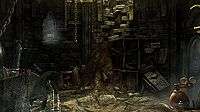 |
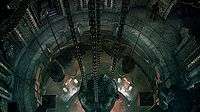 |
 |
 |
 |
 |
 |
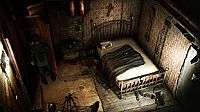 |
 |
The ending, coming as it did after a largely unsatisfying chapter seemed sadly abrupt and there were a few details which didn’t make sense, including a rather odd loose end hanging from Act I. The set up for the threequel was obvious, but by the time the end credits finished, I was left wondering where they can possibly go from here, having used up every conceivable plot device possible, from questionable parentage, double bluffs, reappearing siblings, betrayal, and grave defying deceased, not to mention having burned through the main cast with gusto, leaving a considerably thinner set of options for a continued story.
I just hope that the Black Mirror franchise hasn’t shot its storytelling load before the third instalment because the game was a joy to play, rekindling an interest in a genre I had left behind, and presenting an immersive, enjoyable, and largely satisfying game, full of atmosphere. It is a shame that, for the most part, these games are overlooked by so many when they have much to offer – not the least is value for money because at around 20 hours play time and half the cost, it beats many console offerings into a bloodstained hat. A hat which, if combined with a salt shaker and a biro tube, can be used as a mini submarine.
Pros- • Stunning and realistic environments
• Neat flashes of self-aware humour
• Smooth, easy to use interface
• Command to 'show all active hotspots'
• Haunting touches and details
• Wonderful sense of atmosphere
• New 'Auto Save' feature before deadly encounters
- • Fairly abrupt ending
• Slow fifth act kills the pace somewhat
• Background music and environment effects often drown out important dialogue
• Another safe needs cracking?
• Loose ends and some details which didn't quite make sense
Overall, a beautiful game with an impressive level of detail in its locations which are complimented by a rich tapestry of sound and music, together, creating an immersive and haunting atmosphere. While the thick piling up of slightly dog-eared plot devices is perhaps worthy of a raised eyebrow, or at least a forgiving smile, Black Mirror II rises above it to present a compelling story, setting, and protagonist which endure after the end credits have faded. The abrupt finish and loose ends aside, Black Mirror 2 is highly recommended, oozing enough class in looks, control, and puzzling to reward both genre devotees and newcomers alike.
Last five articles by Lorna
- Flagging Heart
- Where Have All the Hours Gone?
- I Heart... Overlord
- Life Goes On: Done to Death - Review
- Welcome to Spoilerville, Please Despise Your Stay

















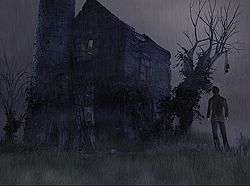
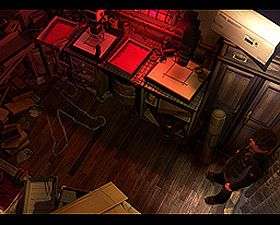


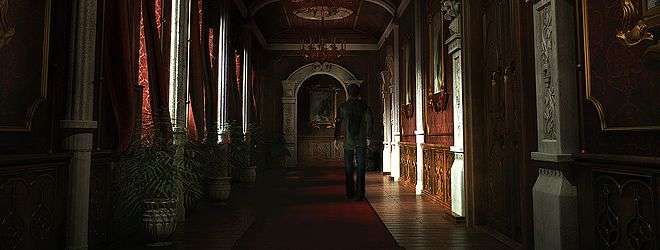







At last a game protagonist I can get behind! How I’ve waited for a surly, acerbic, curmudgeonly character. Truly, a hero that can represent me.
I am definitely giving this game and the original a look in the near future; as I mentioned to you the other day I only just recently found out about the first game. Incidentally, my thanks for not spoiling the first game’s story. But yes, this looks like a very good example of the point and click genre, and like you I’d kind of wandered away from the fold until recently. Not entirely, I still played the odd one that made it into the mainstream like Phoenix Wright or Sam and Max, but the last time I played one of the more obscure and cultish examples until my interest was rekindled this year was probably Syberia II or Dreamfall (which seemingly wanted to be an action-adventure game and had some decidedly dodgy combat tacked onto it, unsure of which genre it actually was).
Curiously, there is a tired small seaside town called Bideford in Devon, pronounced the same as Biddeford. I had to go away and look up on Google if there was actually a Biddeford in Maine, and there is. I’m sure that’ll add to the humour a bit for me, as it looks like you can probably interchange the two without much noticeably different except the accents.
Enjoyed reading this, oddly serendipitous timing as I was considering the first Black Mirror anyway, and your write-up has ensured I’ll be playing it and the sequel.
The last point ‘n click game I tried was So Blonde but I never did finish it. I do enjoy the genre but any gaming on the PC is overlooked for the consoles. There was a Broken Sword game on the PC that I never finished either, perhaps it’s the lack of a computer desk that makes PC gaming awkward. Black Mirror II does sound like a game I would enjoy but will probably be one that I won’t get to play.
sounds good i’ll give it ago after i’ve played that one with the robots that you recomended to me the other week.
I used to love point ‘n’ click games, but I just drifted away from them eventually. I distinctly remember playing Hook though, and finding it quite frustrating as the mouse precision was pretty dire, so I ended up ditching it and moving on to another game that wasn’t driving me insane.
If you were to ask me now whether I’d go back to playing that genre, I’d say no… but… after watching you during the review process and helping with that one puzzle with the map, I think I could get in to this game. I liked what I saw of it, plus the graphics were beautifully rendered. If Black Mirror 2 is anything to go by, then the genre has changed incredibly since I last played… I never expected them to have such attention to detail and be so atmospheric. I may actually give this one a go myself.
My hope is that there will be some seriously sinister and scary ones out there, to give me something to chew on!
I hated the Puzzle variant of the ‘Point and Click’ in my youth with games like Myst and 7th Guest making me want to pull my eye balls out and eat them whilst my retina’s are still attached. I always loved the LucasArts variants with the occasional few such as Simon the Sorceror and Broken Sword proving that it could be that little bit more, but those dark and mysterious titles? Oooh it makes me sad in my core as a gamer to think people play them.
Still! I’ve just realised that I’m a lot older and reading this wonderfully detailed review has piqued my interest Lorna Admittedly the whole experience is going to be soured somewhat with the setting being Biddeford (North Devon -Remote town, dated a girl from there once. Wouldn’t mind a murder mystery on that count) and Preacher now substituting himself for the moody hero -All I think of now is Preach stomping around complaining to the locals that the pasties are funny shapes :p
Admittedly the whole experience is going to be soured somewhat with the setting being Biddeford (North Devon -Remote town, dated a girl from there once. Wouldn’t mind a murder mystery on that count) and Preacher now substituting himself for the moody hero -All I think of now is Preach stomping around complaining to the locals that the pasties are funny shapes :p
The art you’ve described in this though really does sound appealing to me and it really does strike me as a nice lazy game to enjoy during my downtime. I think that this perhaps still sounds a little to dark and depressing despite the clear wonder it struck in you and fed into this review and I’d certainly prefer a more cheerier adventure should you have any reccomendations but even in saying that, If I happen to see a copy cheap, Digital or Retail, I won’t be turning my nose up at it.
Thanks L
Why sad to the core, Adam? Honestly, let the darkness in once in a while, there is nothing wrong with playing games like that Here, Kat and I will hold you down and apply some black eyeliner
Here, Kat and I will hold you down and apply some black eyeliner  How different are they to playing ‘regular’ games with muder, death, zombie slaying, stalking, contract killing, etc? Is it perhaps that there is a realism presented in such adventure titles that unsettles or do you see these games as a way of relaxing and therefore want to avoid doom and gloom?
How different are they to playing ‘regular’ games with muder, death, zombie slaying, stalking, contract killing, etc? Is it perhaps that there is a realism presented in such adventure titles that unsettles or do you see these games as a way of relaxing and therefore want to avoid doom and gloom?
The dark and mysterious games can be great things and are as worthy, if not more so, for the atmosphere they conjure. How they work to evoke a sense of fear or a sinister feel is often impressive and appears to be a detailed layer of effects and I think takes a lot of care and hard work if it is to be done correctly; certainly harder than splashing a palette full of primary colours about anyway. I can, however, understand if you’d prefer to play something cheerier or more colourful; sometimes the last thing you want after a hard day is to be crawling through crypts and risking your socks being scared off, I know. One game has been flagged up to me as ‘scary’ by my sibling and certainly won’t be played with the lights off.
There is a very successful, small sub-genre for the scarier ‘horror adventures’…Black Mirror 2 wasn’t scary, though it had a few jump moments, so whether it could be classed in that genre I don’t know. Still, well worth a play if you ever get hold of it and fancy a lazy weekend with some puzzle solving and a good play length and impressive atmosphere.
Thanks for the compliments btw :), was a hard sort of game to review because the story is king and these games come with their own set of conventions, controls, and expectations which need covered.
It’s almost that. I like being able to switch off with most games which is sad in itself because I should really want to engage more with them and every now and again theres a real gem of a title that really flips a switch but for the most part, I’ve not been able to do that with a game whilst I’m studying.
You really have described a level of detail I wouldn’t have associated with the genre though and thats what’s pulling me toward this one. The horror part only puts me off because I’ve always found them quite predictable and I find myself getting tired of them. I never enjoyed Silent Hill for that and would always rate Mystery much higher than Horror in that scale. If it’s easy on the eyes (preferably non eyeliner eyes thankyou very much) then I’m even more for it though if its essential to building up a feeling of the game whilst your playing it, then who am I to complain?
The first and last point & click that I gave any real time to was Zombi on the Speccy.
That said, this looks decent. If my PC ever unfucks itself, I’ll install this all over my chops.
Glad that some folks are thinking of picking this one up, it is a visual treat and I honestly never expected a gamelike this to have so much detail…shows I have been away for a long time.
@Adam…if you prefer mystery to horror, then there are a fair few espionage sort of one floating about, including one due next month called ’15 Days’ which we’ll be covering. Two game which are already out: Mata Hari and Momento Mori look quite high quality, though I haven’t played them myself. They seem more geared towards mystery than horror/horror lite.
here is how u can unlock all extras
go to this site and u’ll see everything
http://www.gameboomers.com/forum/ubbthreads.php/topics/651097/Re:%20Black%20mirror%202.html